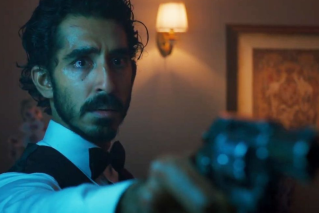Would you swim with a killer whale?

· Aussies end Japanese whaling – for now
There is something about whales. Whether it’s massive blue whales or majestic killer whales (also known as orcas), these beauties of the ocean inspire an outpouring of human emotion.
Efforts to stop Japanese whaling in Antarctica and attempts to ban the use of killer whales in SeaWorld-style theme parks have been championed around the globe, culminating this week in a decision by the International Court of Justice to ban Japan’s annual whale hunt in the Southern Ocean.
This week, another moving story about whales has been released to Australian audiences. Blackfish, a US documentary about a captive killer whale, was released this week and coincided with reports that SeaWorld in the US used valium-like drugs to control the animals, adding to the case against holding them in captivity. As this moving film illustrates, capturing orcas, or any creature, for entertainment at marine parks has a devastating effect on them.
Finally watched @blackfishmovie http://t.co/AOMkjbnClY – I hope Seaworld goes out of business. Horrifying.
— Stephen Fry (@stephenfry) October 28, 2013
The first kill
The Sundance-nominated documentary Blackfish is about Tilikum (Tilly), a killer whale with a history of violence, but the film is also about the inhumane conditions in which orcas are kept at entertainment parks.
Tilly the 5400kg orca is the largest killer whale in captivity and first killed someone at Canadian marine park Sealand of the Pacific in 1991. Trainer Keltie Byrne slipped into a pool. Tilly and two other Orcas were also in the pool, and Byrne was drowned by the killer whales in front of the shocked crowd.
How did they know Tilly was the culprit? He has a distinctive collapsed dorsal fin – something only seen in orcas kept in captivity, rather than the majestic jet black blades usually associated with wild killer whales.

Dorsal fins upstanding: A family of orcas in the wild. Photo: Supplied
Why did Tilly do it?
Killer whales are ultra-sensitive animals who, in the wild and in captivity, stay with their mothers their entire lives. Conservation groups even say there is evidence that removing orcas from their mothers can be fatal.
There is a heartbreaking scene in Blackfish where a mother orca is separated from her child, who is to be sent to another park. The mother screams for hours and hours in a vain attempt to speak to her baby.
Removing these whales from their families in the wild has myriad problems. For Tilly, who was captured at two, it meant he was at the bottom of a female-dominated hierarchal system that eventually saw him placed in protective tanks to save him from vicious attacks from the older female orcas at the park.
Two more fatalities
Following the death at Sealand in 1991, Tilly moved to SeaWorld in Orlando, Florida – the Disneyland of US marine resorts. While Tilly was hyped as a huge attraction at the park, none of the whale trainers were informed about the death of Keltie Byrne.
Inadequate living conditions and controlled feeding for performance were used once again to get the best out Tilly and the other whales.
Tilly killed a second time when a 27-year-old SeaWorld customer, Daniel P. Dukes, was found draped over Tilly’s back, naked, in 1999. Dukes had apparently hidden in the park overnight after visiting during the day, and had climbed into the killer whale tank. The cause of death was drowning.
Again, Tilly got away with murder. He was kept on as a performer at SeaWorld and according to the testimony of the trainers featured in Blackfish, the people working most closely with Tilly were kept in the dark.

‘Tilly’ performing at SeaWorld. Photo: Supplied
The third time Tilly killed a human was in 2009. By then he already had a reputation for being “difficult, depressed and usually temperamental” but was still regularly used in shows.
The victim this time was seasoned trainer Dawn Brancheau, whom Tilly pulled into the water during a show.
Aftermath
A court case investigating Brancheau’s death and Blackfish have exposed major issues surrounding keeping orcas in captivity.
SeaWorld still owns Tilikum, and he still performs, but has been called the ‘chief’ sperm bank for the marine park chain – the orca has sired 21 offspring and, according to BuzzFeed, “Tilikum’s genes are found in 54 per cent of the whales in SeaWorld’s current whale collection”.
But there has been a massive backlash from both the community and major celebrities following details of how the animals are treated and the fact that staff at the resorts were not informed about the animals they were dealing with.
Blackfish illustrates in heartbreaking detail the sad lives of these animals after they are removed from their family pods in the ocean, and the conditions they are subjected to in captivity.
‘Black Fish’ and ‘The Cove’ should be watched before deciding to take your kids to any sea life parks.
— Ewan McGregor (@mcgregor_ewan) October 17, 2013
Watched the most heartbreaking doc on the enslavement of Orca whales at #SeaWorld on #Netflix. Everyone should see this. So sad. #BlackFish
— Aaron Paul (@aaronpaul_8) December 17, 2013
Blackfish is available on Blueray and DVD through Madman entertainment.








